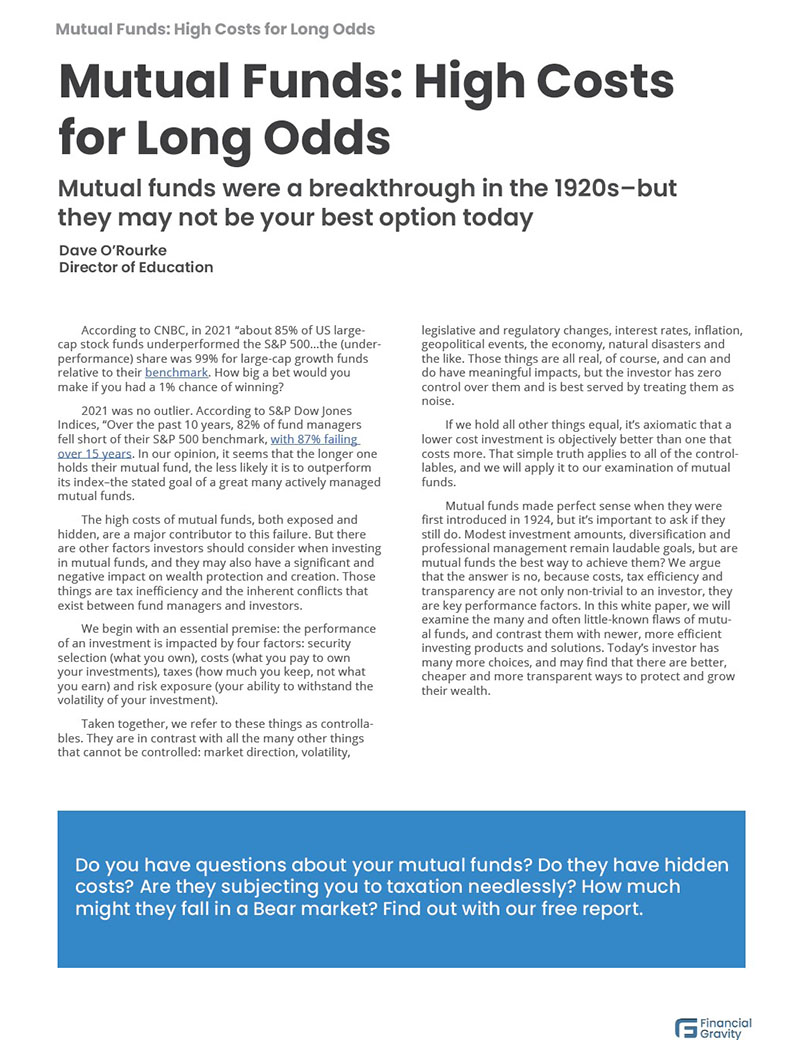Trust Is Downstream From Transparency
Readers of this blog will know that many investors make the fatal mistake of trying to predict things like market movements, interest rates, or the impact of legislation. Not only are those things generally not predictable, but their impact on markets when they do occur is also virtually impossible to predict reliably.
There are four—and only four—things that investors can control: the cost of financial services and advice, the tax efficiency of a portfolio strategy, the overall diversification of an investment allocation, and the exposure to maximum downside risk. Successful investors focus on these four things and do their best to ignore everything else.
However, there is one more thing that can be controlled, but it’s purely qualitative and can only be measured interpersonally. Ironically, this fifth controllable is essential to investor success and is a cornerstone of family office wealth management. It’s called transparency, and it describes the extent to which a client knows and understands the process and motives of their advisors.
For the retail investor, which means everyone who is not already obscenely wealthy, the financial products industry is a high-stakes knife fight where salespeople from brokerage houses, insurance companies, and mutual fund complexes fight it out to sell their wares. How else can you explain the hundreds of millions of dollars the industry spends on sales training for its brokers, agents, and representatives?
You should know that there is a growing trend in the industry, and it may be the most consumer-friendly and positive change in one hundred years. That is the emergence of the true fiduciary, a professional who is not only legally obligated to act only in your best interests, but finds a competitive advantage in doing so.
With Real Clarity, Lots of Good Things Can Happen
Transparency is the surest way to build trust and confidence between client and advisor. It’s also the best way for the client to understand how their financial plan reflects their unique circumstances and how their advisors actually earn the fees they charge.
Experienced investors know advice can be well worth the money. In fact, the “return on fees” can, and often does, provide a much higher return than expected from stocks, bonds, or other investment vehicles. Transparency helps clients understand exactly what value their advisors provide. A true fiduciary advisor can add a lot of value for you.
Industry experts and pundits study all of this. There is a term of art in the financial services industry called gamma; it is sometimes called “advisor’s alpha” and is, essentially, the additional return provided by sound advice and value-added portfolio management. Gamma can be derived from many different advisor inputs.
Market timing, the effort to move in and out of the stock or bond market based on a prediction of the future, is responsible for the epidemic of investor failure. It’s a well-known fact that the average American equity fund investor has underperformed the market’s return every year that it’s been measured. A fiduciary advisor works to help prevent you from engaging in market timing in many different ways.
The risk of markets is poorly understood, and popular risk assessment tools don’t seem to help much. After all, what does “moderately aggressive” actually mean? Does it mean 90% in stocks, or 70%? Is it age-adjusted? Are you moderately aggressive for a 50-year-old or 70-year-old? These things matter a great deal. Wouldn’t it make more sense to set risk as a maximum loss potential? A great advisor can help you discover that number, and if that prevents market timing, that alone would justify their advisory fees.
Institutional and high-net-worth investors operate under an Investment Policy Statement created by their advisory team. That statement guides the design and management of the client’s portfolio. When the client truly understands how and why the statement was created, it builds staying-power confidence. That is exactly what is needed to hang in there while everyone around is losing their heads.
Tax efficiency is the result of executing a thoughtful and customized strategy. Different types of assets perform better after tax in different types of accounts. For example, you would be unlikely to put muni bonds in your IRA; you’d be needlessly sacrificing yield. IRAs and other qualified accounts are good vehicles for holding income-producing assets, while taxable accounts make more sense for low-turnover growth stocks. This is referred to as asset location.
Realizing losses by selling desired holdings when they are in a loss position creates a pool of losses that can offset future realized gains. This takes judgment and disciplined processes and can make a very significant difference in your net return. After all, it’s not what you make but what you keep.
Withdrawal strategies can have a massive impact on your net returns. Like loss harvesting, this is part art and part science, and investors may not have the time or the tools to manage this on their own. Preventing timing and the overpayment of tax are two ways advisors can add gamma for their clients. It’s not uncommon for that gamma to be in the 2% per year range, and can be higher.
There are other ways advisors can add value. This includes an objective decision-making framework that aligns the incentives of the client and advisor. Style diversification and bespoke planning can also add value, and are difficult for most investors to accomplish on their own.
All of these sources of gamma work best in an environment of true transparency. And they provide real value for the client and a competitive advantage for the advisors involved.








